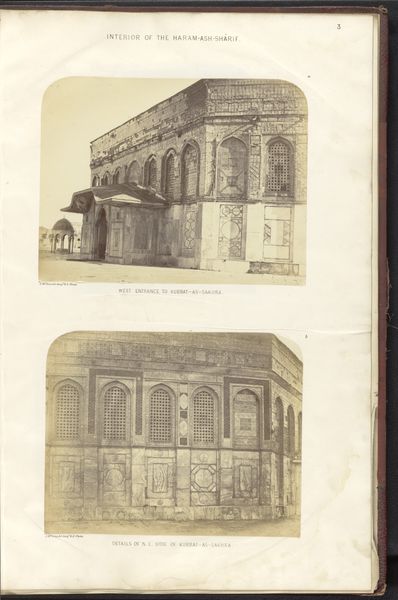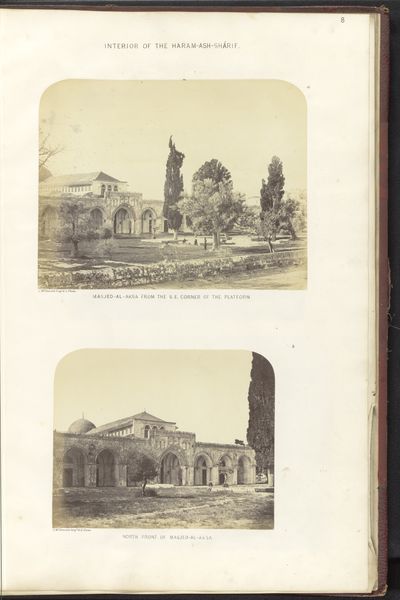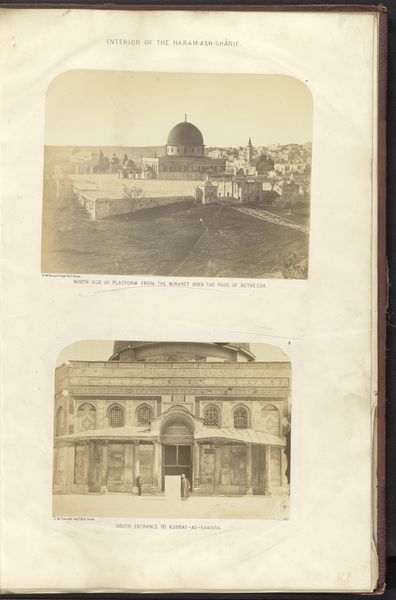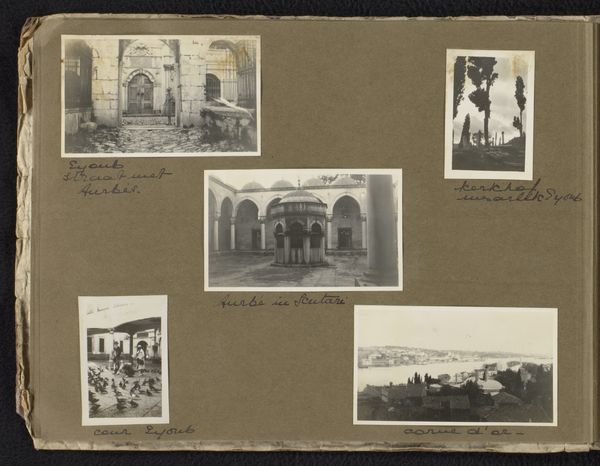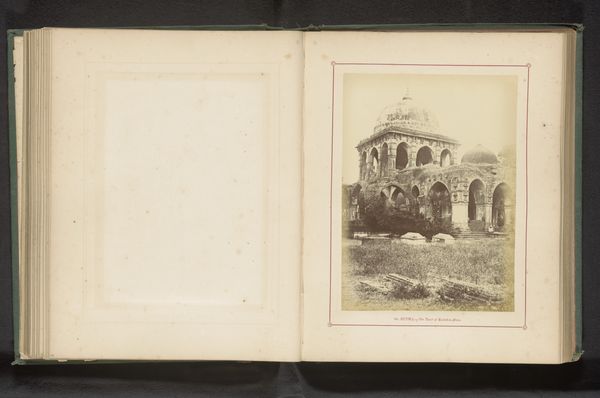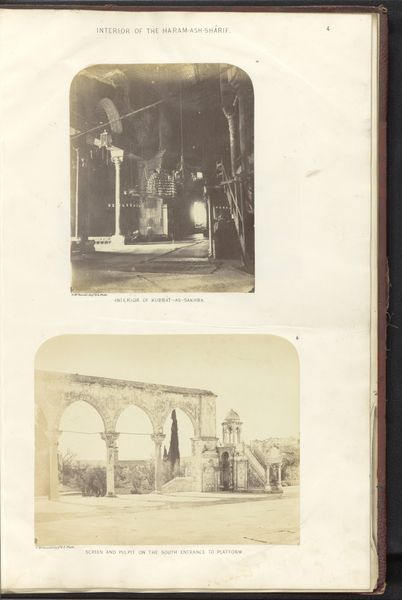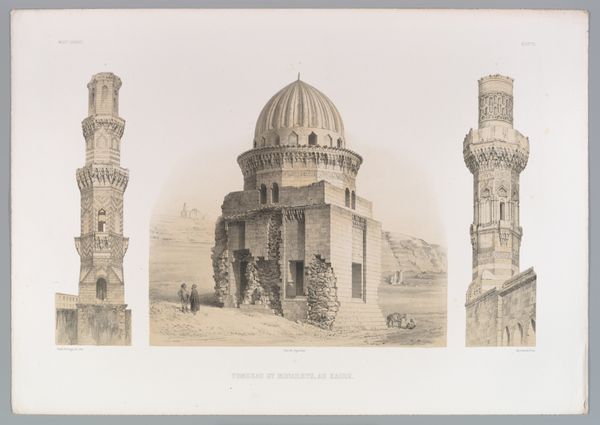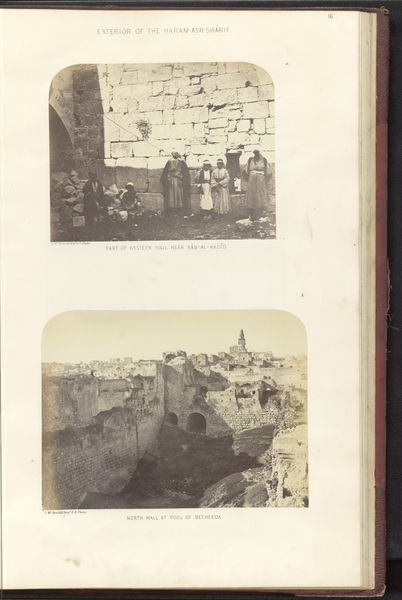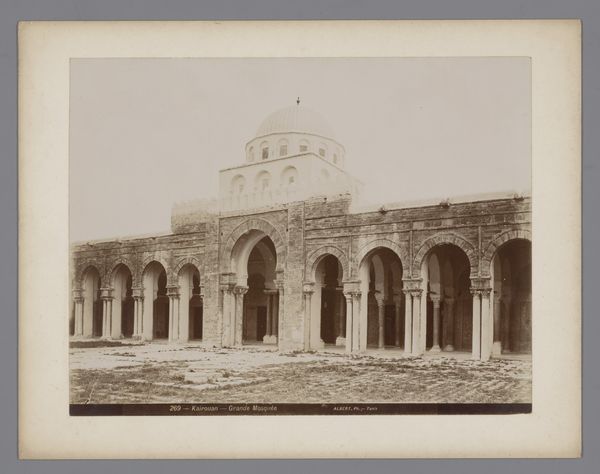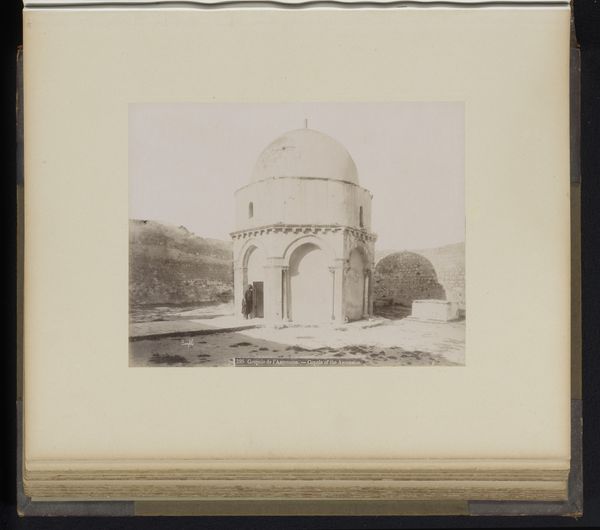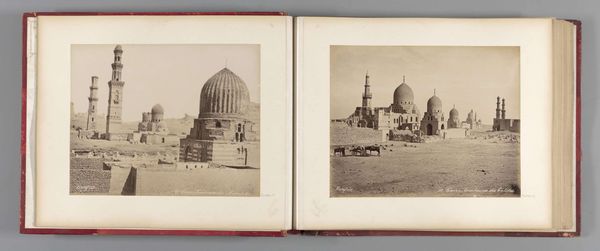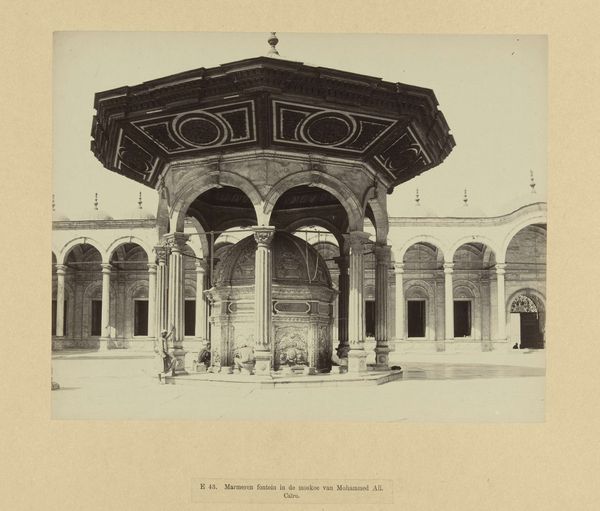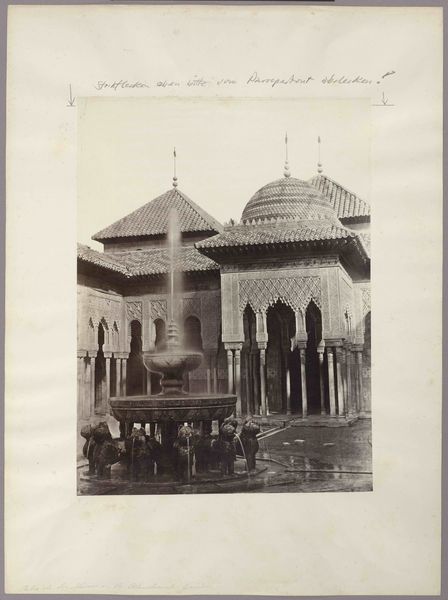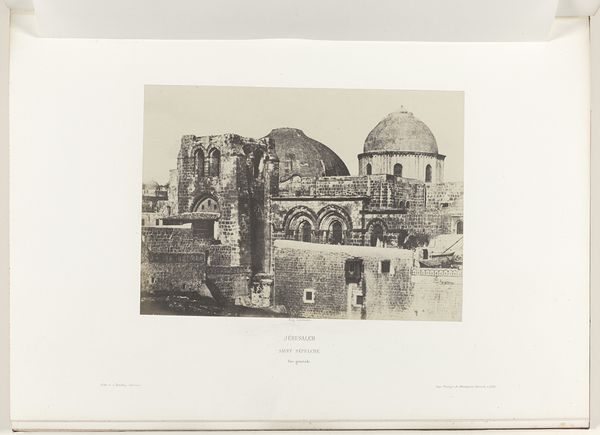
Gezicht op de Kettingkoepel en een gezicht op de zuidwestelijke hoek van het platform, op de Tempelberg in Jeruzalem before 1865
0:00
0:00
photography, albumen-print, architecture
#
landscape
#
photography
#
coloured pencil
#
ancient-mediterranean
#
orientalism
#
albumen-print
#
architecture
Dimensions: height 523 mm, width 340 mm
Copyright: Rijks Museum: Open Domain
Curator: This albumen print, taken before 1865 by James McDonald, gives us two views of the Temple Mount in Jerusalem: the Dome of the Chain and a section of the southwestern corner of the platform. Editor: My first thought? Ethereal. It feels both ancient and remarkably fragile. Like stepping into a faded dream. I love the tones—a sort of ghostly sepia. Curator: The print resonates with the 19th-century fascination with the "Orient." It’s impossible to separate the image from its historical context and how the Western gaze shaped these portrayals. Who was being invited to look? And to what ends? Editor: Absolutely, there's an undeniable romanticism, perhaps a bit heavy-handed. I keep wondering about that person in the bottom image, standing in front of that stark wall. The silence must have been immense. Were they contemplating, praying, or just passing through? Curator: What interests me particularly is how architecture in images becomes a symbol, especially here, on contested religious ground. Photography helped translate distant locations, reinforcing power structures. Editor: It does feel symbolic, almost theatrical. Like a stage set stripped bare, waiting for some drama to unfold. I keep picturing people walking through those spaces, stories whispered against those aged stones. Imagine the secrets held by those structures... Curator: Right—history isn’t just in the grand monuments; it's etched on the unnoticed wall. The small architectural fragment suggests a story beyond the immediately visible—stories of resilience. Editor: Looking at this photography, I keep thinking about our place as viewers across all of this time and distance. Curator: Exactly. To really engage, we must question our perspectives to move beyond superficial charm and understand deeper histories. Editor: Agreed. There’s so much more to it when you remember we're always part of the image, somehow.
Comments
No comments
Be the first to comment and join the conversation on the ultimate creative platform.
